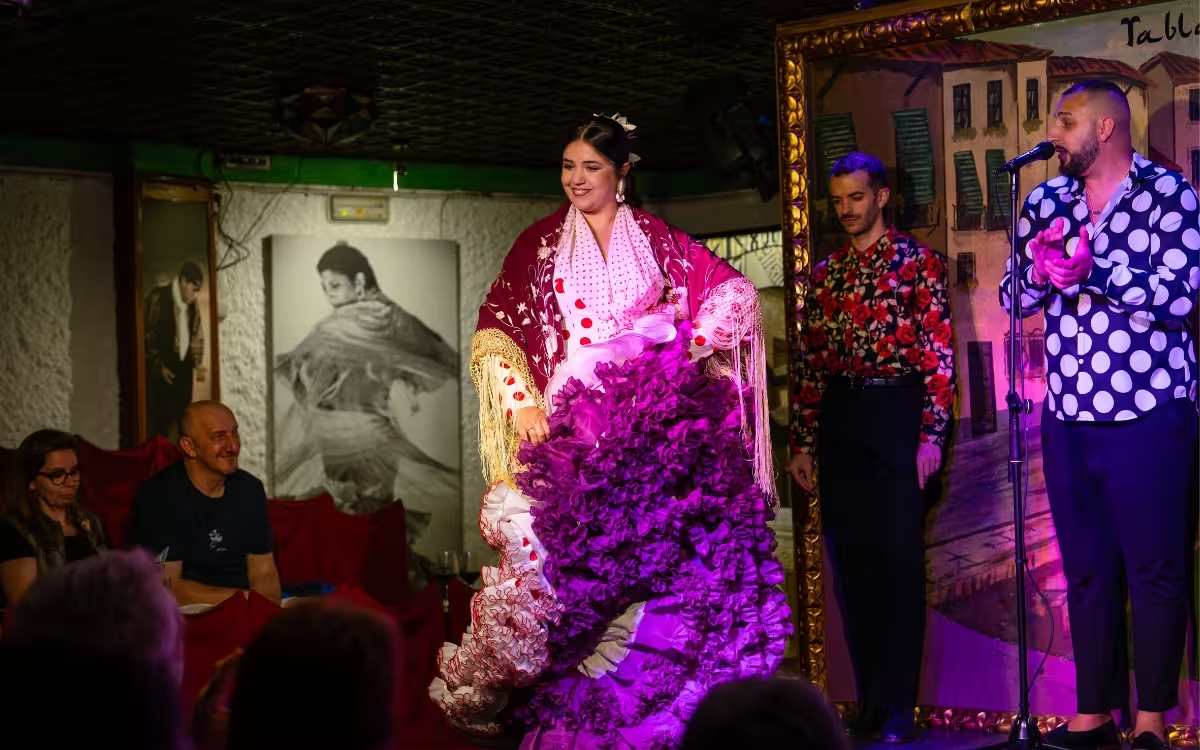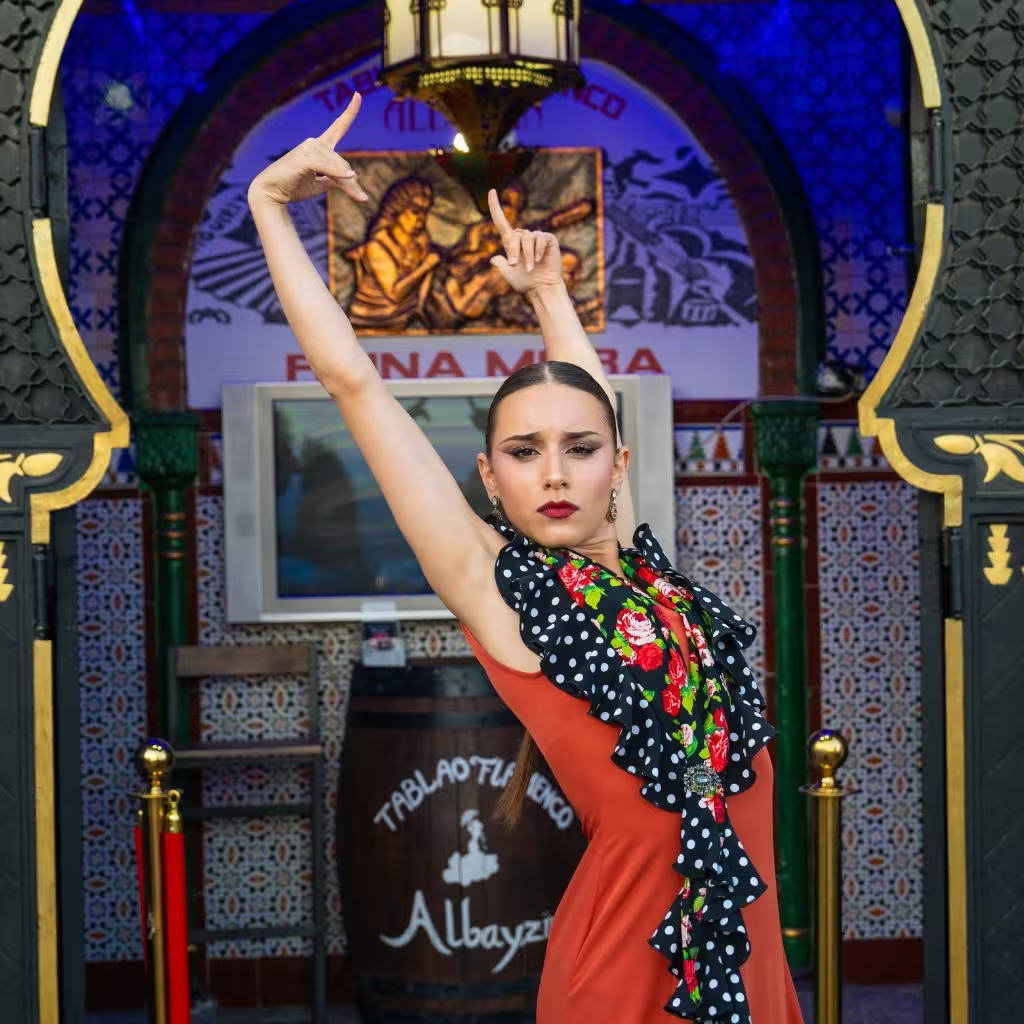The city of Granada is organizing to enjoy an exceptional autumn, in which tradition, cultural innovation, and the art of flamenco will unite to establish it as a prominent figure of living culture in Spain and Andalusia.
A Clear Commitment to Flamenco
Flamenco is the central theme of Granada’s cultural program this year, and it is being approached with determination. Part of this initiative is embodied in the Granada is Flamenco 365 program, which has already begun to be implemented as a prelude to the main event, the Granada Flamenco Biennial 2025.
The municipal program Patrimonio Flamenco (Flamenco Heritage), which includes the participation of more than one hundred local artists and twelve shows, also takes place throughout the months of October, November, and December.
What Does the Program Include?
- The first Granada Flamenco Choir will have its absolute premiere on November 16 at the Manuel de Falla Auditorium, at the same time as the XV anniversary of flamenco being declared an Intangible Cultural Heritage of Humanity is celebrated.
- Workshops, performances, and artistic reflection meetings in various locations in the province (for example, Cúllar Vega, Beas de Granada, Cájar, and Dílar).
- Multidisciplinary perspective: The University of Granada, through its Flamenco Department, has collaborated with us to unite the contemporary and the traditional.
- Unique spaces: Flamenco will expand to the exterior, reaching squares, viewpoints, and neighborhoods with historical value such as the Albaicín and Sacromonte, to become part of the urban and heritage landscape of the city.
Why Was Granada Chosen?
Granada not only wishes to enjoy flamenco this autumn, but also aspires to consolidate its image as a leading cultural destination.
The city offers a variety of festivals, theater, music, and performing arts that consolidate its image as a “city of arts and music.”
And, most importantly: the program is framed within the horizon of its candidacy to be the European Capital of Culture in 2031.
In this way, both flamenco and culture are also shown as an impetus for development in terms of identity and tourism.

Who is this for? Where and when to go?
For flamenco fans: both those who enjoy traditional music and dance as well as those looking for contemporary shows and new fusions.
For those who visit Granada and seek to experience something different in terms of culture: workshops, outdoor concerts, shows in heritage sites, and meetings with artists.
The most important periods run from October to December, with particular intensity during the weekends for the “Flamenco Heritage” cycles.
Tips for Maximum Enjoyment
- Book tickets in advance for the star shows (for example, the premiere of the Flamenco Choir).
- Choose spaces not only the traditional tourist centers: explore neighborhoods like Sacromonte or Albaicín, where flamenco has deep roots.
- Combine culture with tourism: also visit the Alhambra, the viewpoints, tapas and wander the streets; feel how the city lives art.
- Be aware of the calendar of workshops and parallel activities: many proposals are free or have limited capacity, which allows you to experience it as a local.
Granada: an Autumn to Live, Feel and Remember
This autumn, Granada invites you to get carried away by the duende (spirit). The streets are filled with rhythm, guitars, and voices that tell ancestral stories. The combination of the monumental environment, the warmth of its people, and the artistic richness makes the city an unrepeatable setting.
Those who visit Granada during these months will not only attend a cultural event, but will also be part of a sensory and emotional experience that celebrates the Andalusian essence at its finest. An autumn that promises to remain etched in the memory of all who live it.

